September 8, 2017
“Good fucking luck with the World Bank ‘supporting’ your transition to democracy. Soon, the ADB (Asian Development Bank) will come and do the same – if it hasn’t already. Everyone falls for the utterly stupid. Mad world.” – Philippine citizen/activist Kristine Alvarez in response to the announcement “World Bank OKs first Myanmar aid in 25 years”, November 2, 2011
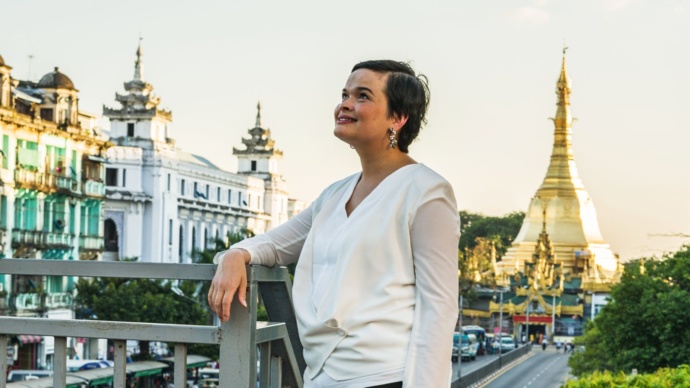
Andrea Woodhouse poses for a portrait on the new bridge on Sule Pagoda road, downtown Yangon. (C) Chiara Luxardo
In the book NGOs – The Self-Appointed Altruists (written in 2002 and updated in 2011) the author observes:
“NGO’s in places like Sudan, Somalia, Myanmar, Bangladesh, Pakistan, Albania, and Zimbabwe have become the preferred venue for Western aid – both humanitarian and financial – development financing, and emergency relief. According to the Red Cross, more money goes through NGO’s than through the World Bank. Their iron grip on food, medicine, and funds rendered them an alternative government – sometimes as venal and graft-stricken as the one they replace.”
“The elites like this model, but it’s fragility is evident. Cancun itself can only take so many more category 5 hurricanes before it will be retired like Mazatlan or Atlantic City. When this happens, new frontiers of commodified leisure, whether in Colombia, Sri Lanka or Myanmar, will be developed, but even so the economic and political costs of the 2 degree Celsius average temperature rise that the world leaders have deemed acceptable are staggering.” — Normalizing Catastrophe: Cancun as Laboratory of the Future, Dec 18. 2010
In the March 3, 2017 article Yangon, Myanmar: World Bank Specialist Goes Back to Beginnings the Financial Times published a full feature on Avaaz co-founder Andrea Woodhouse. The article covers the following events.
In 2008 Avaaz co-founders Andrea Woodhouse and her husband David Madden went to Myanmar. According to Woodhouse, she carried out post-disaster work for nine months following Cyclone Nargis for “a body comprising the government, the UN, and the Association of Southeast Asian Nations”. During this time, Woodhouse states there were “no credit cards, no ATMs and a SIM card for a mobile phone cost roughly $1,500.00.”
Former United States President Barack Obama and Secretary of State Hillary Clinton with Aung San Suu Kyi and her staff at her home in Rangoon on November 19, 2012. Source: (Official White House Photo by Pete Souza)
Neoliberalism would soon follow. In 2012, Woodhouse would relocate to central Yangon “to settle as a social development specialist for the World Bank, which was re-engaging with Myanmar after an absence of more than 20 years” with her spouse and Avaaz co-founder David Madden. Not so coincidentally, Myanmar’s opposition leader Aung San Suu Kyi was released from house arrest, US and EU sanctions began to lift and “market liberalisation” was under way. Between 2011 and 2015 the cost of renting a typical apartment more than doubled with landlords catering to the wave of foreign money by demanding a full years rent up front.
In the Montessori school where Woodhouse’s child attends (“one of maybe two expats in a class of about 15 to 20 children”) the school teaches in English rather than Burmese. Living in one of the poorest countries in Asia, wealthy expats (inclusive of Woodhouse and Madden) and Myanmar elites travel abroad for medical treatment and child birth. Woodhouse acknowledges her children are “extremely privileged”.
August 18, 2017, The FINANCIAL — “The Republic of the Union of Myanmar and the World Bank today signed a US$200 million credit for a First Macroeconomic Stability and Fiscal Resilience Development Policy Operation…. The terms for the IDA credit include a repayment period of 38 years…” [Source]
“In 2012 if we went to a restaurant popular with expats, we would probably recognise everyone there. Now we wouldn’t know a single person.”— Andrea Woodhouse
The vast majority of expats rent. Typical two-bedroom, serviced apartments in the capital cost about $5,100 per month. Parliament passed a new condominium law, which gives foreigners rights to purchase flats, in January 2016.
Avaaz Co-founder David Madden in Myanmar
Avaaz and Purpose co-founders Jeremy Heimans (l) and David Madden: “Jeremy Heimans and David Madden founders of Get Up! Action for Australia, at Old Parliament house in Canberra on Friday, 29th July, 2005.” THE AGE NEWS Picture by PENNY
“After years of isolation, Myanmar is opening up. Opportunities abound. However international companies have little experience here and local firms have little experience working with them. Parami Road meets this need.” — Parami Road Website
As first noted in the 2014 article, SYRIA: Avaaz, Purpose & the Art of Selling Hate for Empire, David Madden, co-founder of both Avaaz and New York consulting firm Purpose, has also co-founded the marketing firm Parami Road in Myanmar (“Our clients are mostly international companies entering Myanmar and they demand an international standard of work”) as well as the tech firm Phandeeyar – a 6000 square foot ICT hub in the heart of downtown Yangon. Launched with the support of several sponsors in 2014, including Internews and Phandeeyar (previously operated as Code for Change Myanmar), it is important to note that the key partners of Phandeeyar are USAID, the US State Department, U.S. Mission to ASEAN, and the US-ASEAN Business Council. [Source]
“A serial entrepreneur who co-founded the global campaigning website Avaaz.org and U.S.-based digital strategy agency Purpose, among others, the Harvard-educated Madden believes technology is essential for Myanmar’s development.” — July 8, 2015, Myanmar Now
Simply stated, Madden plays a vital role in bringing western ideologies and foreign investment to the doorstep of Myanmar. As a co-founder of Avaaz, an NGO that specializes in behavioural change, Madden’s hashtag for his tech firm (“human Capital Development”) sums up the goal: social impact (#socialimpact MM). Of course, Madden cannot achieve this alone, thus he is joined by thousands of NGOs that comprise the non-profit industrial complex:
“Estimates vary widely on the number of local NGOs in Myanmar. An article claimed more than 10,000 such groups, while another study conducted in 2003 by Save the Children—the first detailed look at civil society in Myanmar—estimated there were 270 local NGOs at that time. Regardless of the number, there is a vibrant and growing nongovernment sector encompassing a range of interests and approaches throughout the country. International NGOs are increasingly active in Myanmar, working in humanitarian response and longer-term development in a multitude of sectors, including the environment, health, education, livelihoods, rule of law, advocacy, and civil society capacity building. International NGOs, present in small numbers since the 1990s, have entered Myanmar in two recent waves: in the aftermath of Cyclone Nargis in 2008, and since the forming of the new government in early 2011.” — Civil Society Briefs Myanmar
A key function of Madden’s tech firm is not unlike that of MoveOn.org (a co-founding NGO of Avaaz) and its relationship with the US Democratic party, which is to focus on building Myanmar’s voter registration. It’s other key function is to pitch business opportunities to investors. In September of 2016, the tech firm launched the “Phandeeyar accelerator”. According to Forbes (October 31, 2016), the “accelerator” provides $25,000 in seed funding, mentoring and free office space in Phandeeyar’s 6,000-square-foot building. Participants also receive “$200,000 worth of strategic services, including access to Amazon Web Services, free English classes and a range of other benefits. They’ll also have the opportunity to pitch investors who Madden describes as ‘serious about the Myanmar market.'” Madden foresees startups that establish themselves “could be poised for explosive growth in the next several years as the economy continues to accelerate.”
“Madden said that some had been hesitant, waiting to see how State Counselor Aung San Suu Kyi’s rise to power would play out. But confidence is growing following the peaceful political transition, and the U.S.’ decision to ease sanctions in recent years has inspired much interest in the country. McKinsey Global Institute estimates that Myanmar’s economy has the potential to reach $200 billion in 2030, more than tripling from $45 billion in 2010. The Overseas Private Investment Corporation, run by the U.S. government, issued the first installment of $250 million loan to the telecommunication company Apollo Towers Myanmar in June. Microsoft is working with the Myanmar Computer Company to help 100,000 people develop IT skills within the country. And the country saw a strong performance from its first listed stock earlier this year, indicating potential for future growth. Investment opportunities abound, with deep needs across the energy, tourism and infrastructure markets, according to the British Chamber of Commerce.” —This Tech Accelerator Is Betting That Myanmar’s Startup Scene Is Set To Explode, Forbes, October 31, 2016 [Emphasis added]
In 2017, the Phandeeyar Accelerator’s Demo Day hosted over 200 local and international investors. The list included 70 venture capital investors (VCs) and mentors including Red Dot Ventures, Digital Ventures, and Omidyar Network. Note that although the official language of Myranmar is Burmese, spoken by 70-80% of the population, all Burmese speaking in the Phandeeyar demo day video are speaking English. Far be it for Anglo “leaders” to make any concerted effort to speak Burmese, let alone learn the language. This of course is colonization in one of its most accepted and blatant forms. This point is further validated by the fact that Edulink Australia (specializing in English proficiency) is a strategic partner of Phandeeyar.
Madden is not the only expat poised for explosive growth in Myanmar. With the global capitalist economic system hovering close to stall speed, the world’s most powerful corporations are desperately searching for new markets. Myanmar is the “new sweet spot” for the most egregious corporate entities:
“Still, the country’s young, inexpensive workforce and low living standards offer huge potential for growth. GE, on its website, describes Myanmar as a “new sweet spot” for growth in Southeast Asia. Some other major U.S. brands got a head start, including Coca-Cola, which has a factory producing for the local market. Ball Corp. has a factory in Yangon’s Thilawa Special Economic Zone making cans for Coca-Cola. MasterCard is expanding in the area of ATM cards. GE is active in energy and other sectors and leases Boeing 737-800s to the country’s national airlines. ConocoPhillips and Chevron have stakes in oil and gas exploration and development. Some U.S. businesses, like Caterpillar, have distribution tie-ups in Myanmar with local or other foreign companies.” [October, 2016, Source]
Above: Phandeeyar headquarters
On June 3, 2016 it was announced that Phandeeyar secured a $2 million follow-on investment from Omidyar Network. [Source: Deal Street Asia] Omidyar Network first invested in Phandeeyar in 2014 with other investors and aid givers including the Schmidt Family Foundation, the Open Society Foundation, USAID and Google. Deal Street Asia also reports that “[A]part from Phandeeyar, Omidyar Network has invested in Proximity Designs, Open Myanmar Initiative (OMI), Myitmakha news agency, Yangon Journalism School, Global Witness and Namati in the country.”
Financiers of Madden’s entrepreneurial tech operations and innovations also include Internews, Facebook, the United States Embassy, Hewitt Packard, Samsung, the US State Department, Pact, Office of Transition Initiatives (USAID), The Asia Foundation, KBZ Bank and Red Dot Ventures. Strategic partners include (but are not limited to) telenor, wave money (telenor, Yoma Bank), Fb Start, AWS Activate (Amazon), JobNet, Microsoft BizSpark, Today Ogilvy Myanmar (“we make brands matter”), Edulink Australia (specializing in English proficiency) and PwC.
The Innovation Marketplace is a joint initiative by Phandeeyar and FHI 360, and supported by USAID in which a primary focus is “mobilization of popular support for social change.”
And while the rich get richer:
“Land laws were changed in 2012 and 2013 to make it easier for the government to facilitate land grabs and many segments of the rural population have seen their homes demolished and their paddy fields ruined to make way for foreign development projects. Farmers like Umya Hlaing have been left without land with, “no conversation, no replacement land, no adequate compensation.” [January 30, 2017, Source]
The Ultimate Balancing Act
Here one must note that while Myanmar opens its arms to neoliberal foreign policy, it simultaneously transitions into a playground for the rich – all while the tensions and killings between the Muslim Rohingya, the Buddhist Rakhine, the Burmese authorities, Burmese government and its military escalate. As the so-called human rights NGOs (which are actually in servitude to empire) turn up the volume on this crisis, we must acknowledge there is much more going on behind the scenes that we, in the west, are not cognizant of. For example, terrorist factions such as Islamic State and Al Qaeda have embedded themselves into various Rohingya organizations such as the Rohingya Liberation Organization and the Rohingya Solidarity Organization. The well-documented atrocities and killings of Buddhist Rakhine by the Rohingya go unreported by mainstream media. This has undoubtedly been orchestrated, at least in part, by foreign interests. Exploiting existing divisions is key to controlled chaos and destabilization. Where divisions do not already exist – they are created.
Above: Avaaz training Buddhist Monks: “A young student and monk take part in a non-violence training program – they cannot show their faces for fear of being identified by the military.” Source: Avaaz website
The said contention surrounding the Rohingya is the issue of legal citizenship (sovereignty and nationality) verses refugee/migrant status. This ongoing crisis is then conflated with the religious components. The fact that this is a basic human rights issue is then lost. Further, “Harsha Walia, a social justice activist and journalist, tells us that borders are constructs and that they serve an imperialistic purpose. Borders represent practices used to legally coerce displaced migrants into precarious labor and criminalized existence. In her work, Undoing Border Imperialism, Walia offers a framework termed ‘border imperialism,’ which is a system that controls the flow of people, themselves fleeing the military or economic violence of empire, who are racialized and economically exploited by their illegalization.” [Source: Borders: Imaginary Lines, Real Exploitation]
What is notable here is that fact that although Avaaz has produced a campaign to bring attention to this tragedy, never do they ask for the world to demand the implementation of a no-fly zone as they have done in countries that reject imperial dominance. It appears as though, if Myanmar does not continue to kowtow sufficiently to foreign interests, an intervention with a no-fly-zone on could easily be the next campaign demand for NGOs to rally behind. However, this is most unlikely as the full transition of Myanmar to western ideologies is already well underway with foreign investment now pouring in. Regardless of the geopolitics involving China and Asia as a whole, the fact is the World Bank has already sunk it’s teeth in. There is simply too much to risk with a full raze of the landscape. Indeed, the Myanmar crisis will prove to be a problematical balancing act of sabotaging Chinese interests while simultaneously attracting foreign investment from western corporations. If necessary, a coup is far more likely to be orchestrated by foreign interests. The crisis being highlighted by international NGOs should be seen as more of a threat – pressure upon Aung San Suu Kyi to ensure complete subservience more than anything else. The key factor is this: interventions by imperial states are never based on protecting human rights.
Also, to be taken into account, is the power struggle between the declining United States and new superpower China. First, consider the massive investment into Myanmar by China:
“But the total $248 million U.S. companies have committed since 1988 amounts to less than 1 percent of total foreign investment of about $60 billion. China has invested more than $25 billion, according to Chinese figures.” [October 2016, Source]
Secondly, consider the crucial energy aspect:
“After the massive Rakhine energy reserves were discovered in 2004 they attracted China’s attention. By 2013 China completed oil and natural gas pipelines, which connect Myanmar’s port of Kyaukphyu with the Chinese city of Kunming in Yunnan province.” [Source]
Dmitry Mosyakov, director of the Centre for Southeast Asia, Australia and Oceania at the Institute of Oriental Studies of the Russian Academy of Sciences, sums it up as follows:
“First, this is a game against China, as China has very large investments in Arakan [Rakhine] Second, it is aimed at fueling Muslim extremism in Southeast Asia…. Third, it’s the attempt to sow discord within ASEAN [between Myanmar and Muslim-dominated Indonesia and Malaysia]. — [Source]
Myanmar-to-China Crude Oil & Gas Pipelines
The Myanmar-China crude oil and gas pipelines were designed to carry more than 22 million tons of oil and more than 420 billion cubic feet of natural gas per year was to commence operations in 2013. On April 11, 2017, the Financial Times announced that China and Myanmar would open long-delayed oil pipeline after being suspended for years, fraught with delays and conflict. “Once fully operational, the pipeline from Made island in Rakhine state can supply almost 6 per cent of China’s crude oil imports. The gas line is already in use.” On May 20, 2017 India of Times reported that “China-Myanmar oil pipeline opens enhancing tie: The oil reached Ruili, a border city of in China’s Yunnan Province at 4 p.m. on Friday according to the state owned China National Petroleum Corporation, which built the pipeline.”
Map: Oil & Gas Journal, 2012
Near-term pipeline plans grow, longer-term projects sag – Oil & Gas Journal, February 6, 2012:
“Myanmar awarded China National Petroleum Corp. exclusive rights to construct and operate the proposed Myanmar-to-China crude oil pipeline. This line and a companion natural gas pipeline would transport hydrocarbons from the Bay of Bengal across Myanmar to southwestern China (Fig. 4). Plans call for the 440,000-b/d crude pipeline to run between Maday Island in western Myanmar through Ruili in China’s southwestern Yunnan province and on to a new 200,000-b/d refinery in Anning. Both the pipeline and refinery are to begin operation by 2013. CNPC began building a large oil import port at Kyaukpyu, Myanmar, in October 2009 to serve as the pipeline’s input point. The port will be able to receive vessels up to 300,000 dwt and will have storage capacity of 600,000 cu m.”
The natural gas pipeline is scheduled to begin carrying 12 billion cu m/year to southwestern China in 2013. Route preparation began in mid-2010, with the first pipes welded in August 2011. The pipeline will parallel the route of the crude pipeline to Ruili. From there it will run to Kunming, the capital of Yunnan province, before extending to Guizhou and Guangxi in South China.
The crude line will transport oil carried by tanker from the Middle East, while the gas line will carry material from Myanmar’s offshore A-1 and A-3 blocks. Total estimated project costs are $1.5 billion for the oil pipeline and $1.04 billion for the gas pipeline.
The new pipelines will give China better access to Myanmar’s resources and will speed deliveries and improve China’s energy security by bypassing the congested Malacca Strait, which currently ships most of China’s imported crude oil.”
Here it is important to note that 90% of the crude oil going through the Myanmar-to-China pipeline is designated for China – while the bulk of the ecological devastation and social impacts/displacement, has been placed on the Myanmar ecosystems and most vulnerable populations.
The Strategic Expansion of Globalization & Capitalism
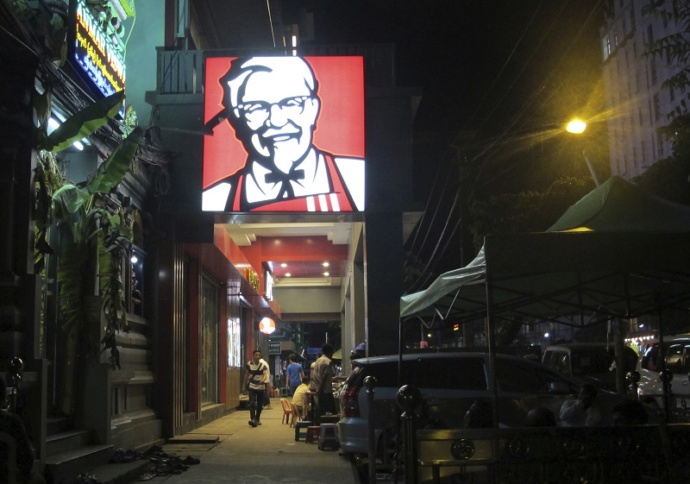
In this Friday, Oct. 7, 2016 photo, a sign of KFC’s grinning Colonel Sanders and his goatee is lit outside its outlet in Yangon, Myanmar. The end of most U.S. sanctions against Myanmar is raising hopes western businesses will join the rush to invest in Myanmar that up to now has been dominated by China and other Asian countries. But much hinges on how the government, led by Nobel laureate Aung San Suu Kyi, reshapes the country’s outdated laws and other policies. (AP Photo/Elaine Kurtenbach)
Here it is critical to acknowledge that empire’s strategic plans for expansion are designed years and even decades in advance. Consider that the co-founder of Avaaz Ricken Patel has been involved in Burmese activism since 2001 – 6 years prior to the founding of Avaaz – and also prior to co-founding Res Publica (a founding NGO of Avaaz) with Avaaz co-founder and former U.S. Representative Tom Perriello:
“…I have worked for years in Sierra Leone, Liberia, Sudan, and Afghanistan for international organizations, and I first got involved in Burma activism in 2001, so I had some experience to bring to understand the dynamics and the groups involved.
From the start, we recognized that granting money well, monitoring its expenditure, and following up is a demanding activity that requires professional support. Avaaz is a campaigning organization and not in this business. So we chose a foundation partner with long experience supporting the Burmese people to advise and administer our community’s donation. That group is the Open Society Institute, one of the largest and most respected foundations in the world. OSI is taking no overhead on the funds we are granting to Burmese groups, and has also increased its own support to this cause in 2008.” [Source]
It is also vital to recall George Soros (a key financial backer of Avaaz at its inception) has long had his eye on Myanmar. The 2003 Council of Foreign Relation’s report titled “Burma: Time For Change,” (“Report of an Independent Task Force Sponsored by the Council on Foreign Relations”) summarized the intentions: “[T]hese recommendations are intended to inform U.S. government actions as well as to increase U.S. cooperation with other countries, especially in Asia, to bring about a long overdue political, economic, and social transformation of Burma.” The independent task force sponsored by the Council on Foreign Relations included 21 task force members (inclusive of George Soros) who were representative/associates of the following organizations, corporations and institutions: Human Rights Watch, Goldwyn International Strategies (an international consulting firm focusing on the geopolitics of energy), the Unocal Corporation (oil and gas), liaisons for Vanity Fair, New York Times, New Republic, U.S News, World Report, The Economist, the Open Society Institute and the Soros Foundations Network, Soros Fund Management, the World Bank, Amnesty International, National Security Council, the Millennium Development Goals, Psychiatry and Public Health, Refugee NGOs, and National Democratic Institute for International Affairs.
The seven organizations/institutions represented by eight task force observers were The Century Foundation, The Asia Foundation, U.S. Department of State, Council on Foreign Relations, U.S. House of Representatives, International Crisis Group and the United Nations Department of Political Affairs.
As a side note, the report also demonstrates the extent to which the international NGOs work hand in glove with imperial states, funneling funds through NGOs rather than governments. This demonstrates the blatant paternalism unabashedly embedded in the policy of Western governments:
“According to the U.K. Foreign and Commonwealth Office, current U.K. policy is to deliver “targeted, transparent, and accountable assistance to ordinary Burmese people through the UN, international NGOs, and not through the Burmese authorities,” — The Council of Foreign Relation’s (CFR) 2003 document entitled “Burma: Time For Change,” [Source]
And while those in Ivory Towers, who have succeeded in decimating the natural environment in their own countries, transform Myanmar into a country that will reflect not only Western values but also the vapid western waste and consumption… and while rich expats rent apartments for USD $3,000 – $8,000 per month… consider the residents of 555:
“Like many others, he moved to Yangon to look for work in the sprawling shantytowns that have grown up on the outskirts of the city. The suburbs are centers of industries that have begun to boom since Myanmar opened to the world in 2011. Factories cordoned off behind iron gates produce everything from salt to garments. But with a new government in power since April, the 555 residents are among hundreds of thousands of informal settlers facing an uncertain future as displacement looms on the horizon again.
Nay Shwe moved to Hlaing Tharyar in 1996 as a construction worker employed to build the upmarket Pun Hlaing Golf Course — a gleaming image of wealth right next door to the slums. He rifled through a plastic wallet to pull out a crumpled, yellowed letter granting permission for himself and several other laborers to live near the grounds. At the time, there was little more than vacant scrubland. “We have endured hardships since that time until now,” he says. “We had to pump much sand from the river to live here.” Subsequent years brought tussles over the land. In 2012, he spent six months in prison for organizing protests against a planned forced eviction that was eventually suspended…
“When we describe the slums we always describe the negative things,” says Slingsby. “We never look at the positive things. These people are great survivors. … Somehow they manage to survive. Somehow a lot of them send their children to school and even to university. Who built the houses? The people built houses themselves.”
When their kids were turned away from the official schools, the 555 residents simply built their own. They recruited their own volunteer teachers. On a recent morning, a group of village elders, all men, stood outside and admired their handiwork. Like most of the structures in the area, the single-story school is propped up on wooden stilts to protect it from the rising water.
“So flooding is a problem here, but we can build a concrete road, so flooding for two or three hours is OK for us,” says Hla Htay. 555 might not exist, officially, and it might not be good land, but it is home.
“We prefer living here because it is the nearest place to our work, to the factories, so here we can build everything by ourselves,” he says. “We can build our houses. If we need to move somewhere provided by the government it will be expensive. … It will be a lot of rules.” [July 18, 2016, Evicting the Residents of 555]
The word Avaaz apparently translates to “voice”. Unfortunately, Avaaz is a voice for the elite power structures that keep the world at large enslaved. Avaaz is a slap in the face to the self-determination of citizens in sovereign countries everywhere. It must be recognized that those who continue to support this organization, with full knowledge of its elite formation, share these paternalistic Western values.
Further reading:
- China Kunming to Myanmar Kyaukpyu DWP pipelines to open in June 2013, January 23, 2013
- Myanmar, la Cina assetata di petrolio costruisce un porto e un gasdotto: in fuga migliaia di pescatori locali e 23 villaggi fantasma, February 5, 2015
- Geopolitics of Rohingya Crisis, September 3, 2017
- The Rohingya Crisis: Conflict Scenarios And Reconciliation Proposals, September 7, 2017

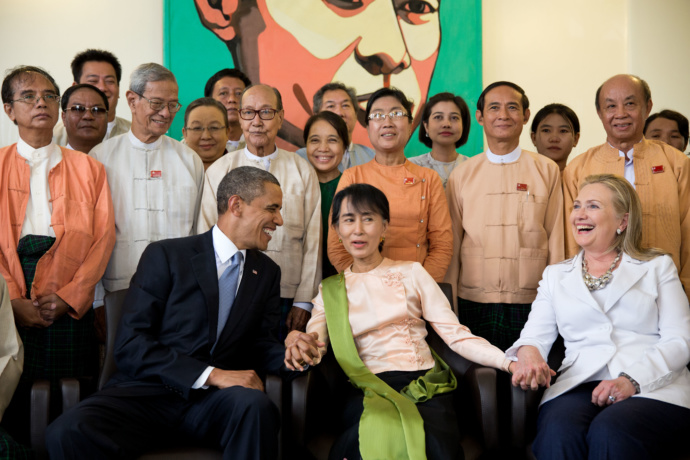

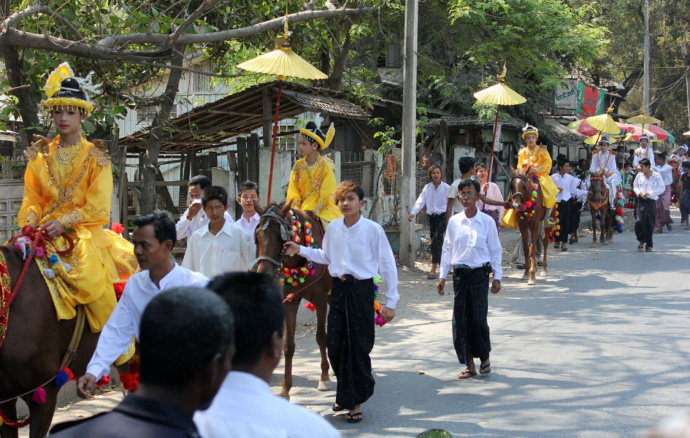
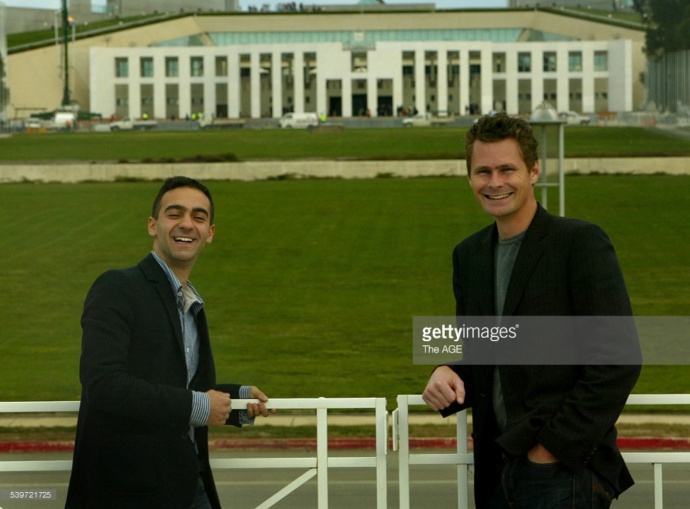
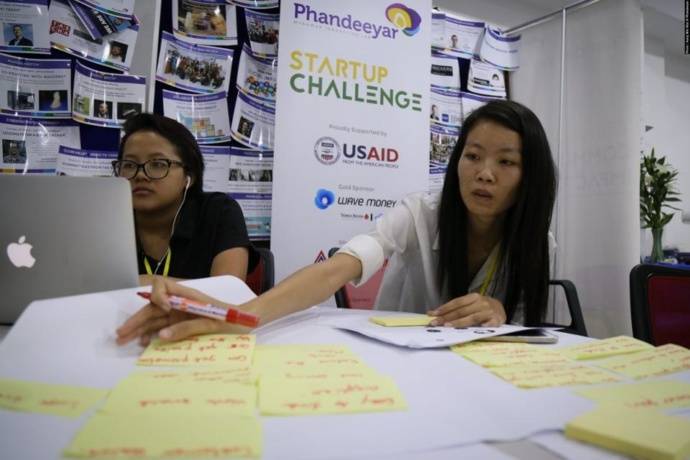
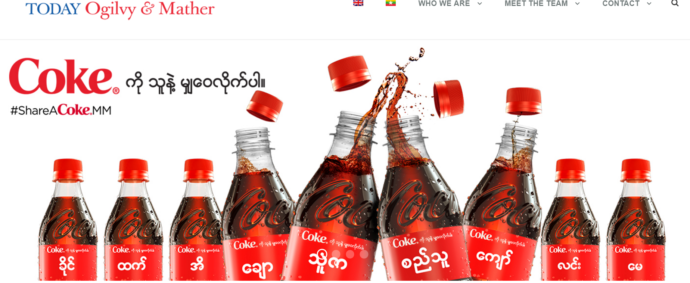
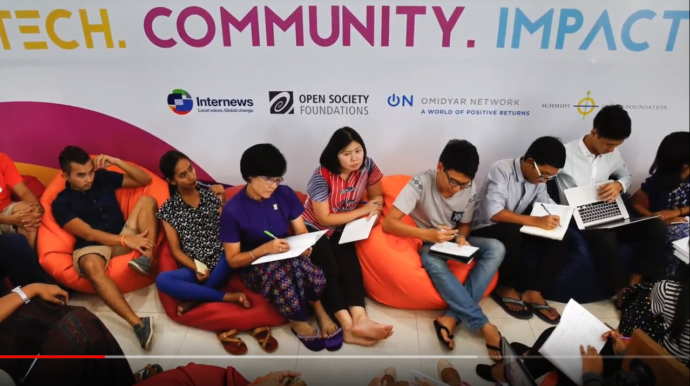
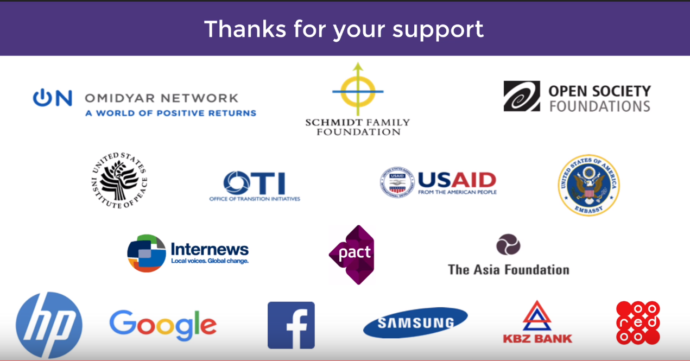

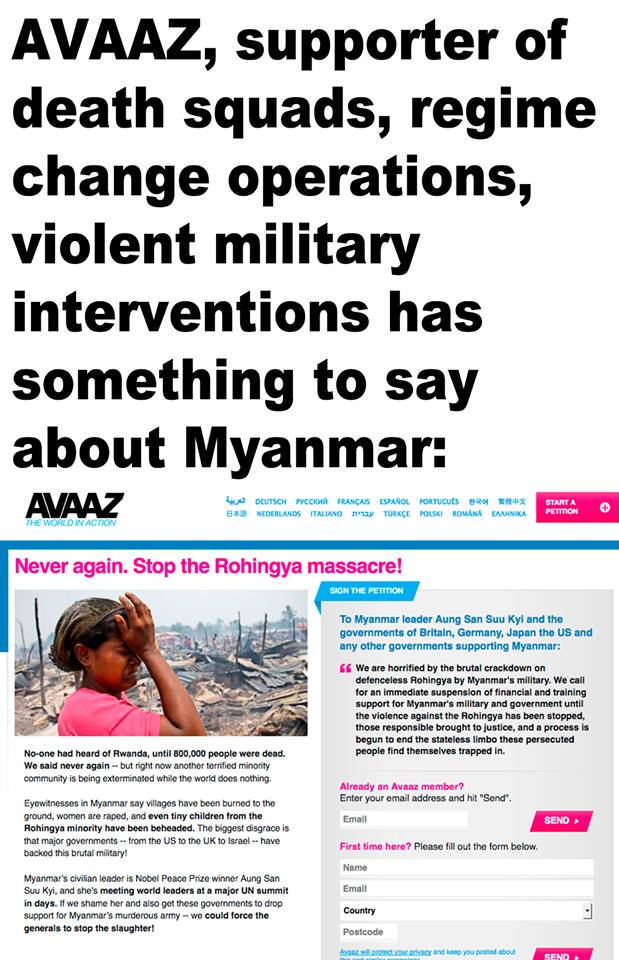

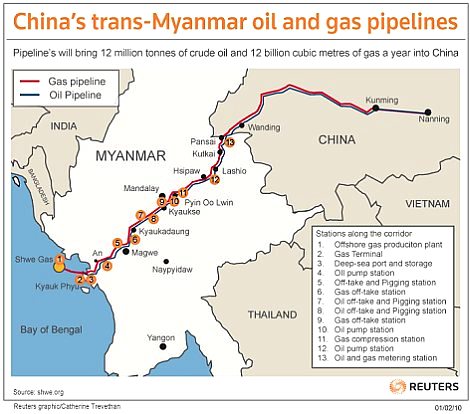
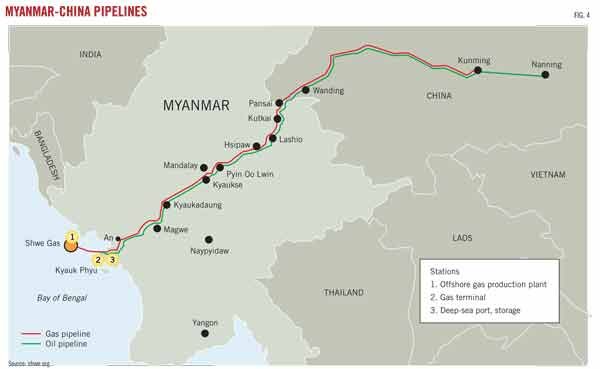
 Become a Patron!
Become a Patron!
Pingback: From the NonProfit Industrial Complex with Love » Avaaz Goes to Myanmar – deinvestiture